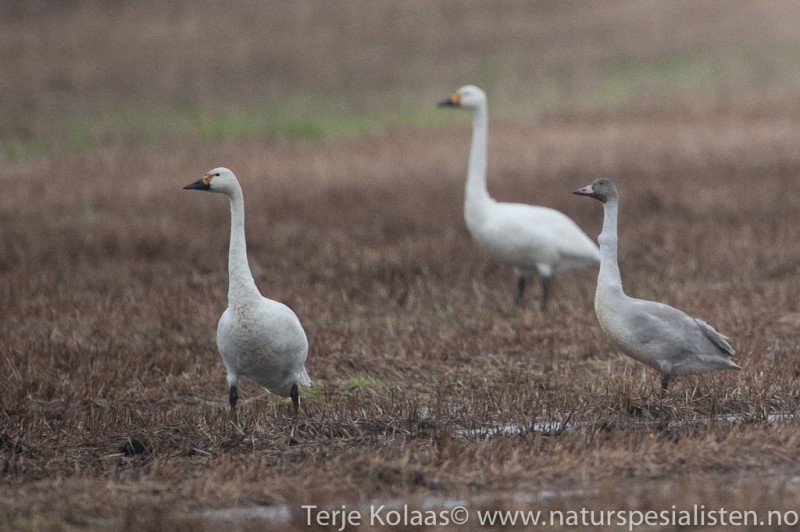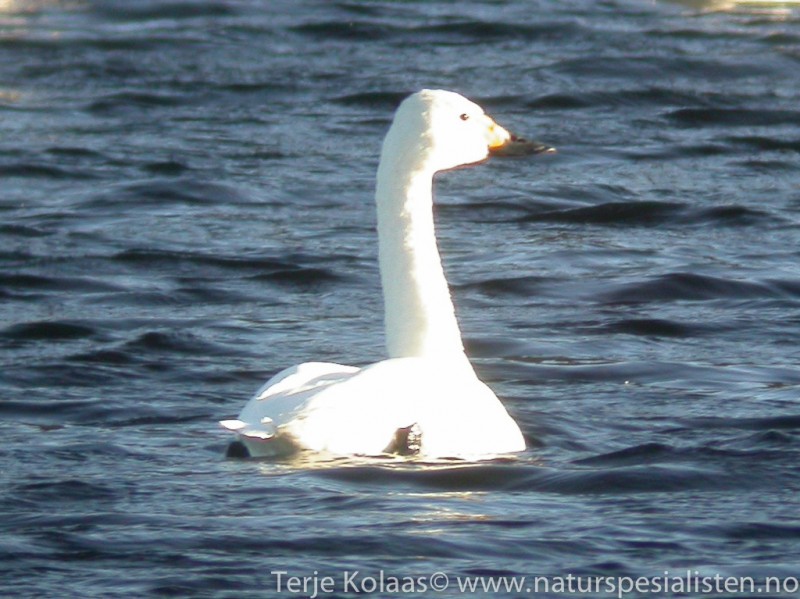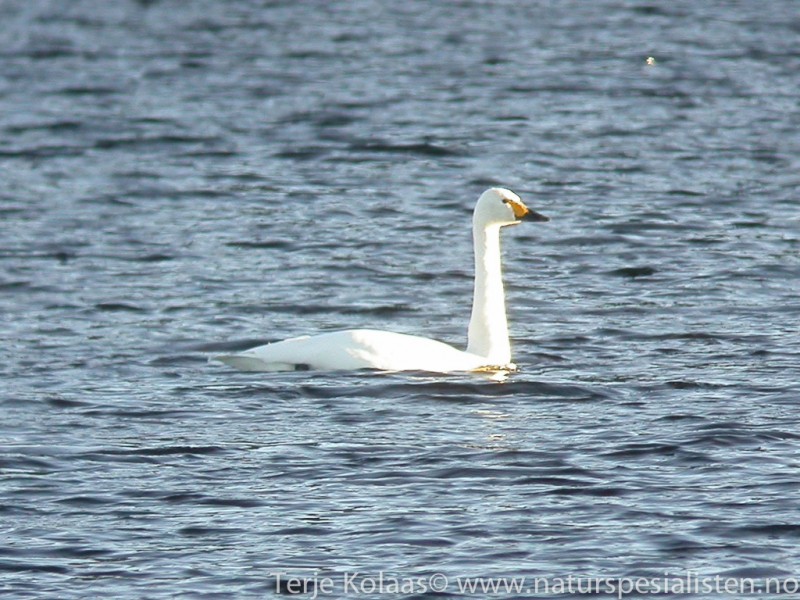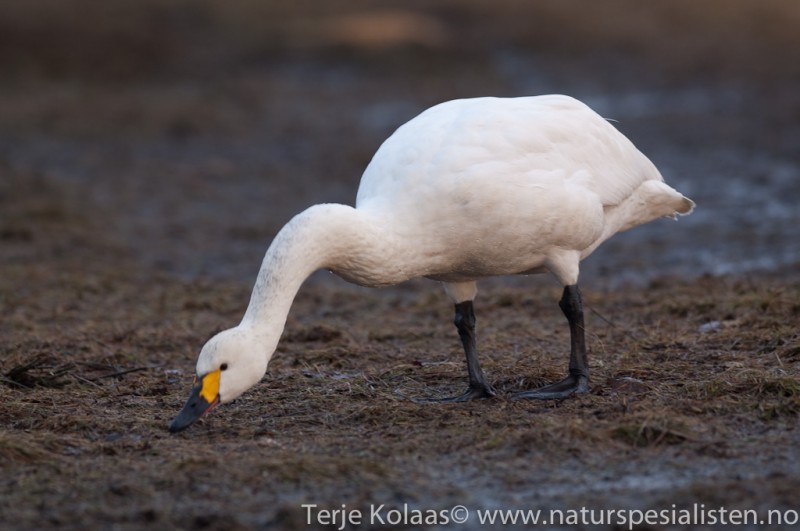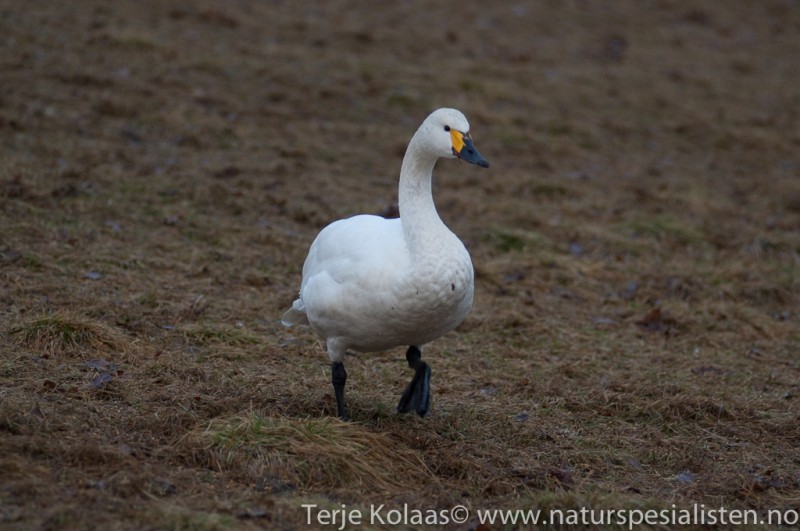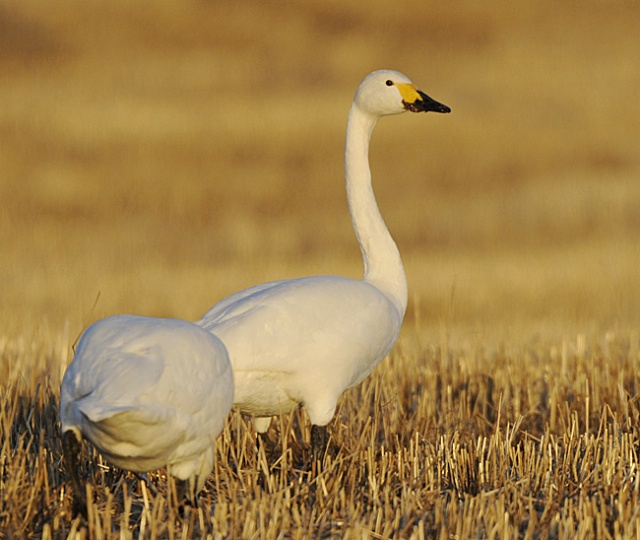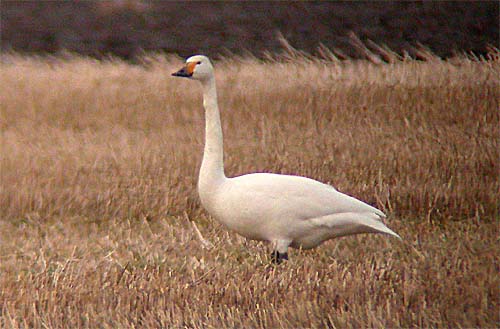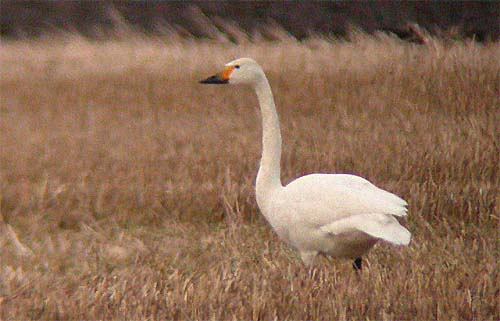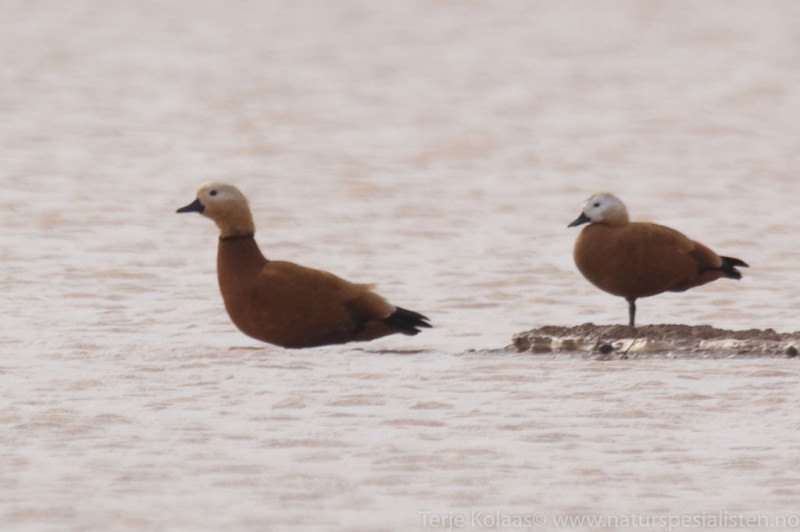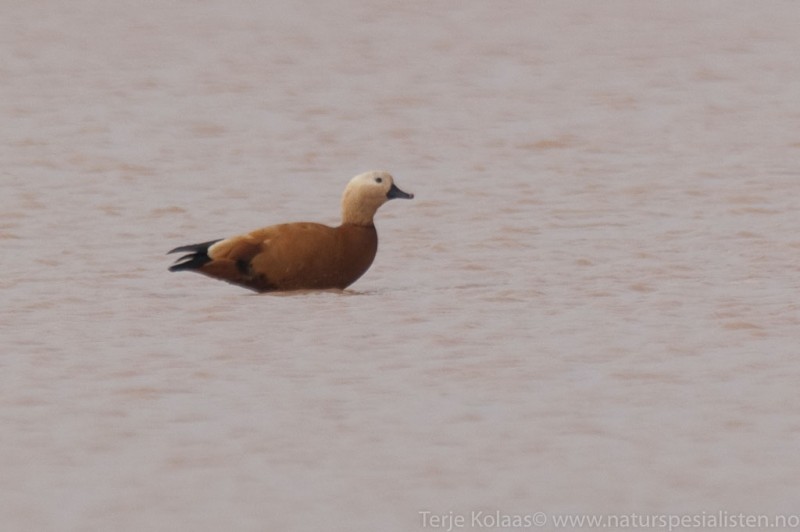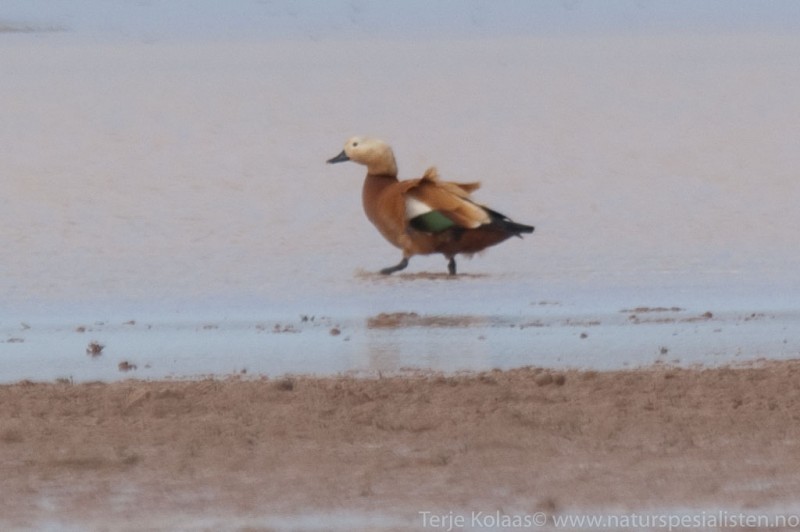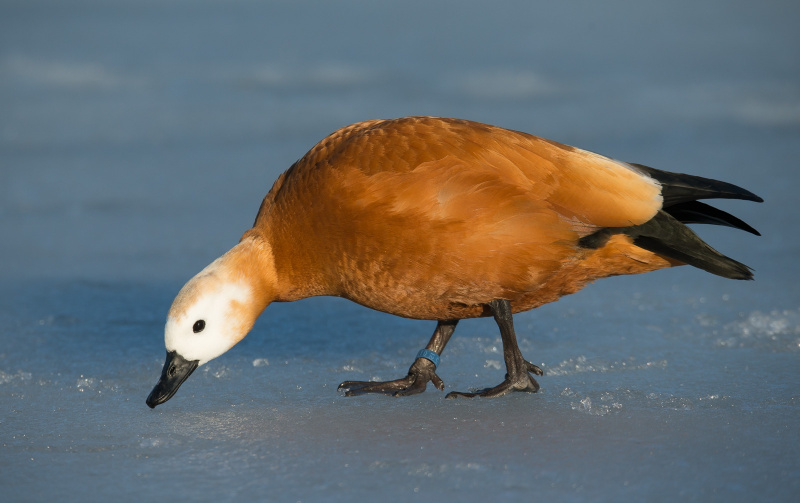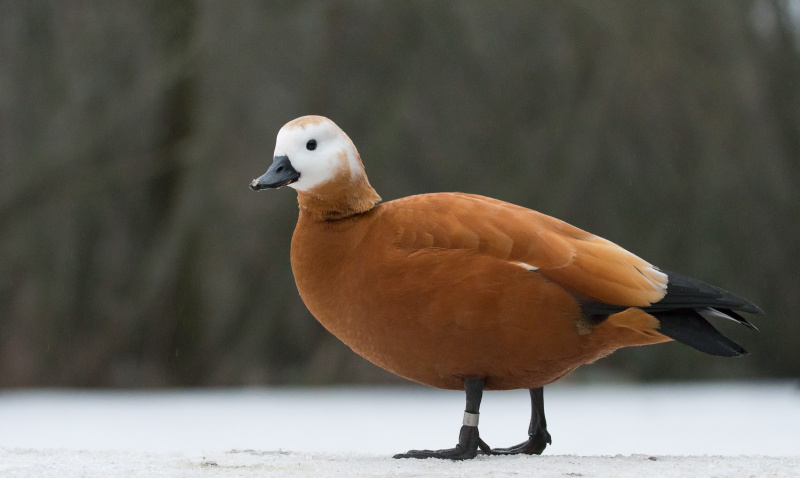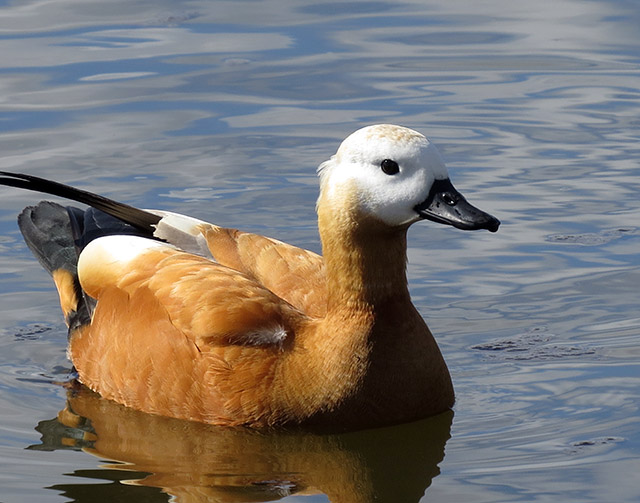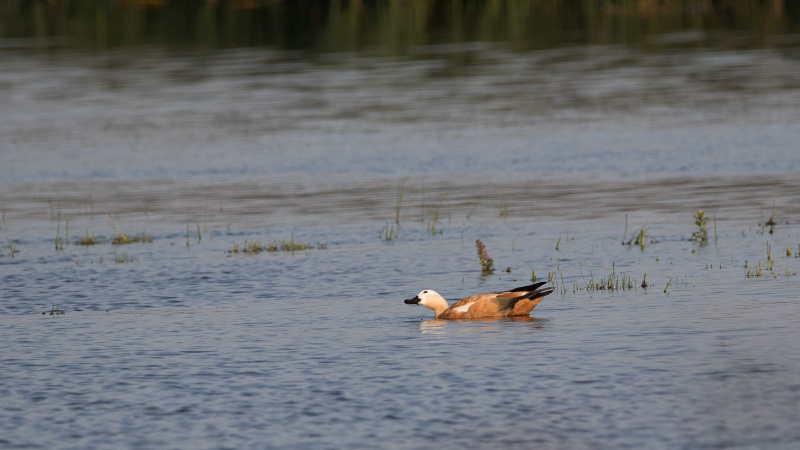Tundra Swan (Cygnus columbianus)
Ruddy Shelduck (Tadorna ferruginea)
Easily confused with Whooper Swan, but yellow on bill restricted to a rounded patch. May sometimes extend towards the bill-tip, but never beyond nostrils. Angle of mouth bold black. Gives a more compact impression than Whooper, due to shorter neck. Head shape noticeably more rounded, and seemingly larger. Juveniles paler grey than Whooper, with the same bill pattern as in adults, but in faint, pale yellow and pink. Flight easy and goose-like.
Sound:More vocal than other swans. Both higher pitched and deeper sounds. Birds on the water often gives crooning, crane-like notes with less defined pitch. Tone is less full-bodied in these calls. Flight call a deep, yelping, soft barking sound. Each call short, with a "helpless" quality.
Call:
Distribution:
Wikipedia: map (se also Xeno-canto below)
Ecology:Birdlife ecology
Links:
Observation.org Latest observations
Image search Flickr NB! May give other species
CCMay only be confused with Egyptian Goose, but differs in short, dark legs, dark bill, thicker neck, rufous belly and lack of eye-patch. Black and white wings conspicuous in flight as in Egyptian Goose, but lacks thin, black stripe at rear of white coverts. Sexes quite similar. Male with ringed neck in breeding plumage, and female with more contrasting facial pattern. Immature similar to female, but with "dirty" white wing-patches. Less dependent on water than most other ducks.
Sound:Distinct voice and quite vocal. Nasal, trumpeting, donkey-like calls, often drawn out to a rattling, trill (Chewbacca of Star Wars). Male higher pitched than female.
Call/song:
Distribution:
Xeno-canto: map
Ecology:Birdlife ecology
Links:
Observation.org Latest observations
Image search Flickr NB! May give other species
CC
 English
English Albanian
Albanian
 Armenian
Armenian
 Bulgarian
Bulgarian
 Catalan
Catalan
 Croatian
Croatian
 Czech
Czech
 Danish
Danish
 Dutch
Dutch
 Finnish
Finnish
 French
French
 Georgian
Georgian
 German
German
 Greek
Greek
 Hungarian
Hungarian
 Italian
Italian
 Latvian
Latvian
 Lithuanian
Lithuanian
 Macedonian
Macedonian
 Norwegian
Norwegian
 Polish
Polish
 Portuguese
Portuguese
 Romanian
Romanian
 Russian
Russian
 Sami : Lule sami
Sami : Lule sami
 Sami : North sami
Sami : North sami
 Sami : South sami
Sami : South sami
 Scientific names
Scientific names
 Serbian
Serbian
 Spanish
Spanish
 Swedish
Swedish
 Ukrainian
Ukrainian

